
How to Choose a Bar Stool: A Comprehensive Guide
Finding Your Bar Stool: Easy Steps for Great Seating
Understanding how to choose a bar stool is crucial for not only enhancing the comfort of your seating but also optimizing the functionality and aesthetics of your space. This isn’t a decision to take lightly; your choice will have a lasting impact on how you interact with your living area, whether it’s a kitchen, a home bar, or a dining room. So sit back and read on as we guide you through the essential factors to consider in this detailed guide on how to choose a bar stool.
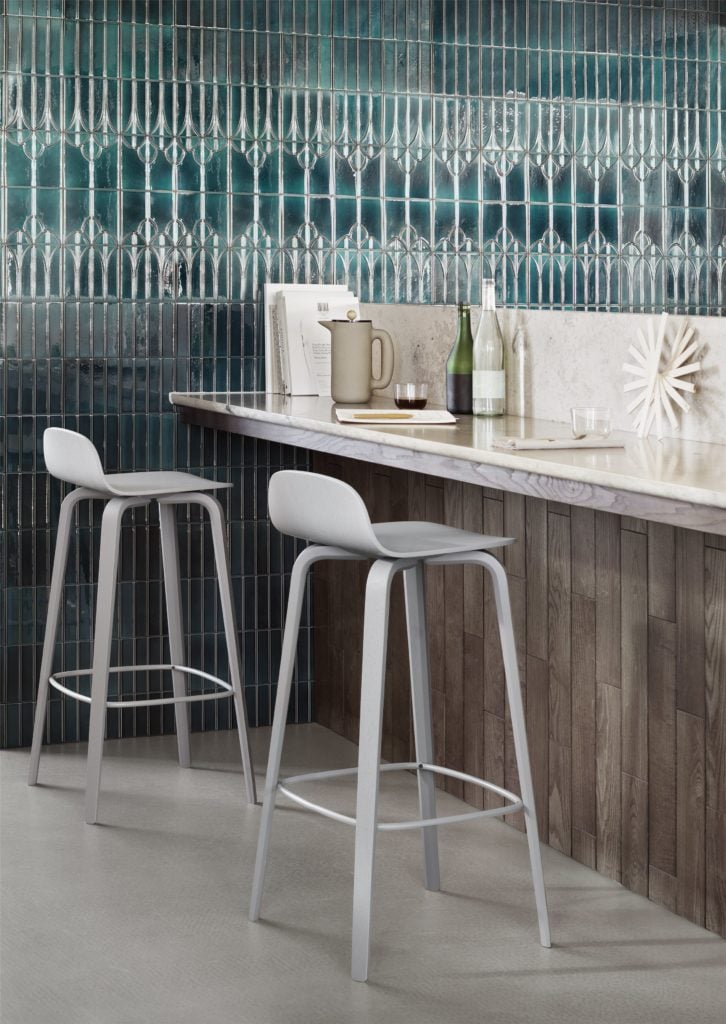
Visu Bar Stool by Mika Tolvanen for Muuto
Understanding Your Needs when choosing a bar stool
When embarking on the journey to choose the ideal bar stool, it’s paramount to start by comprehending your unique needs and the specific context in which you intend to use these seating solutions. To make an informed decision, consider the following key factors:
The Role of Bar and Kitchen Stools in Different Settings:
Bar stools find their place in a variety of settings, and each setting may have slightly different requirements:
Kitchen: In the kitchen, kitchen or counter stools are often used for casual dining or as additional seating around an island or countertop. Consider whether they’ll be used primarily for family meals or as a spot for quick snacks and conversation.
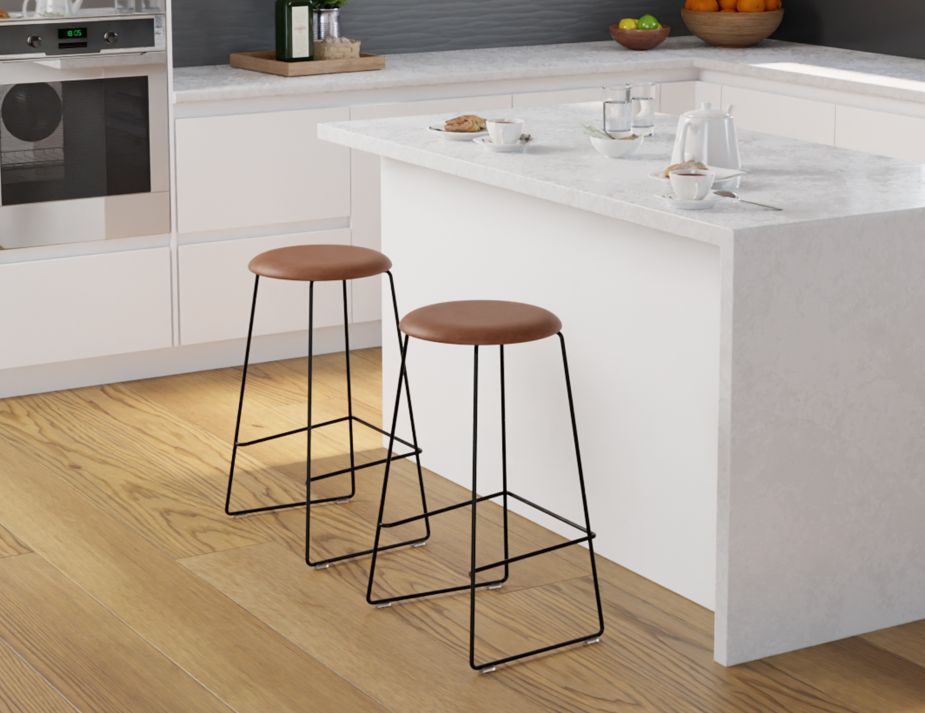
Bar or Pub: In a commercial bar or pub, comfort, durability, and style are essential. Bar stools here should be inviting and able to withstand frequent use.
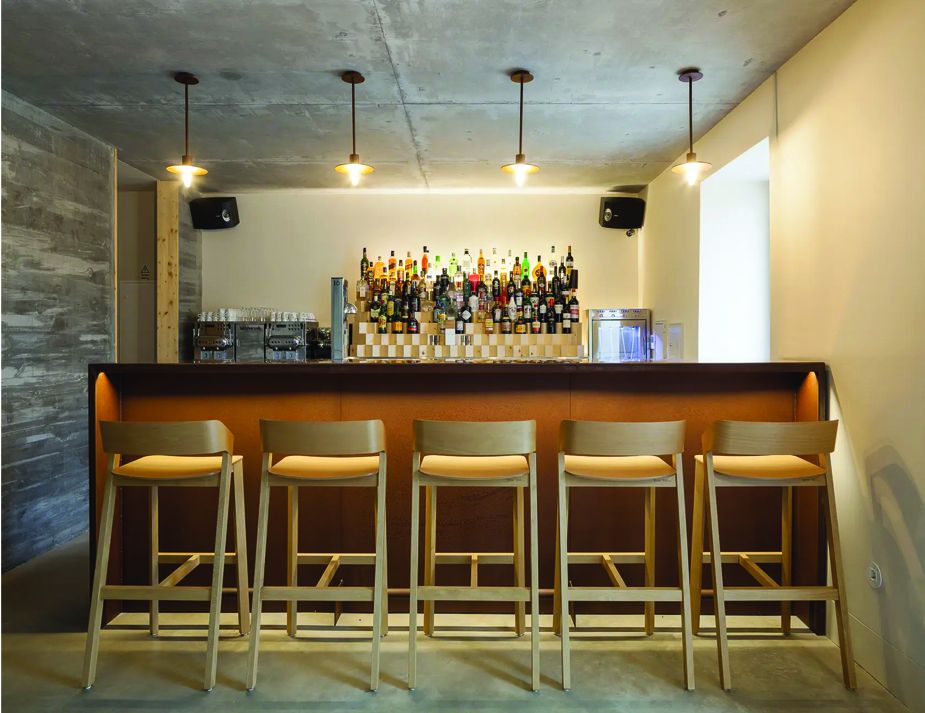
Outdoor Space: If you plan to place bar stools outdoors, materials that can withstand the elements become crucial. Weather-resistant options are a must for outdoor bars, patios, or poolside seating.
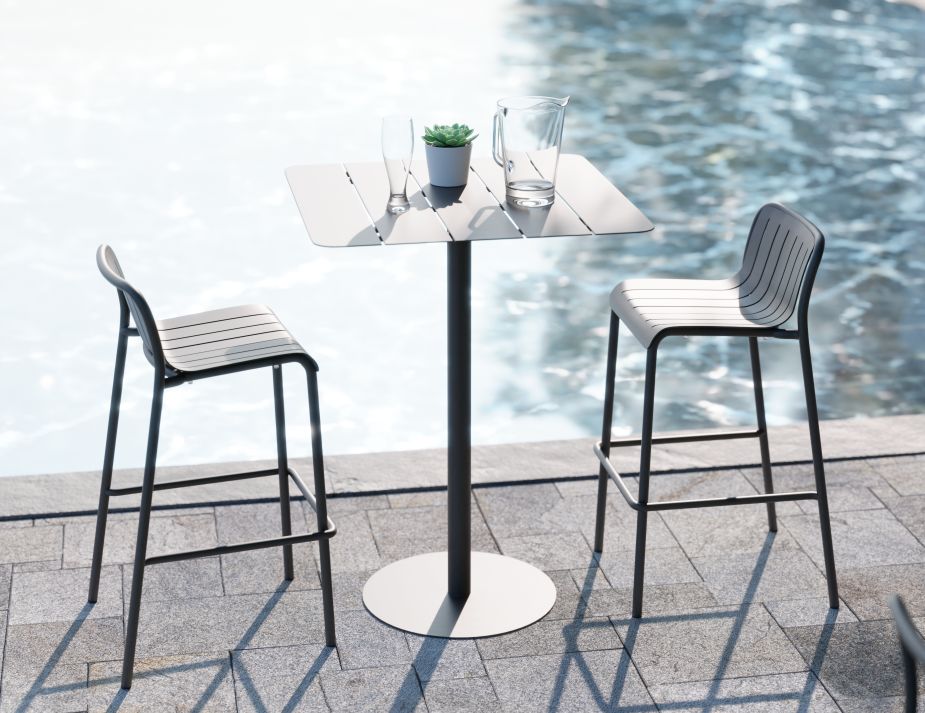
Measuring the Right Height for Your Space
- Measure the Surface Height: Measure the height of your bar counter, kitchen island, or other surfaces where you plan to place the bar stools. Measure from the floor to the top of the surface.
- Consider Legroom: Leave enough legroom between the seat and the surface to comfortably sit and move your legs.
- Account for Cushion Thickness: If your bar stools have cushioned seats, take into account the thickness of the cushion when calculating the overall seat height.
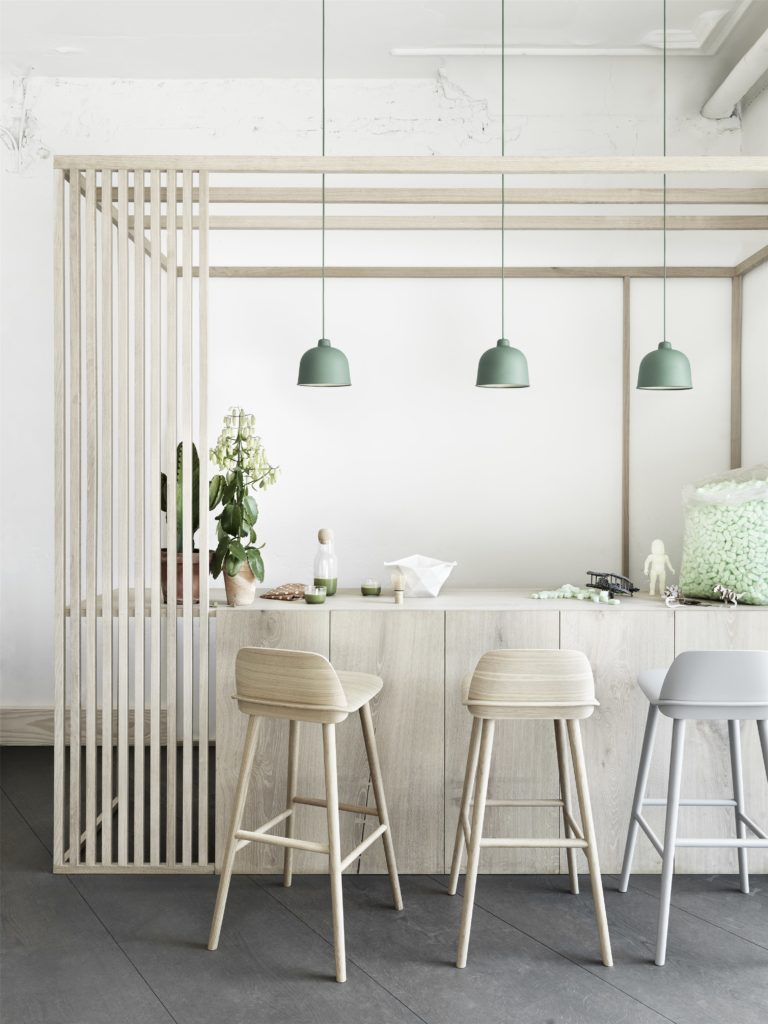
Nerd Bar Stool by David Geckeler for Muuto
Bar Stool vs Kitchen Stool Height
When learning how to choose a bar stool, understanding the importance of stool height is crucial. The height not only impacts the comfort level but also the overall usability of the stools in your kitchen or bar area. Getting the height right is a vital step in ensuring that your seating complements the space functionally and aesthetically. Therefore, taking the time to measure and consider the ideal height for your needs is an essential part of the decision-making process. Bar stools are available in both counter height and bar height.
Standard Height Options:
Bar stools come in various height options to accommodate different seating needs. Understanding these standard heights is essential:
- Counter/Kitchen Height: Typically, counter-height bar stools have a seat height of 65cm They are suitable for kitchen islands or counters with a standard height of around 90cm to the top of the bench.
- Bar Height: Bar height stools usually have a seat height of around 75cm. They are designed for traditional bar counters, which typically have a height of 100cm.
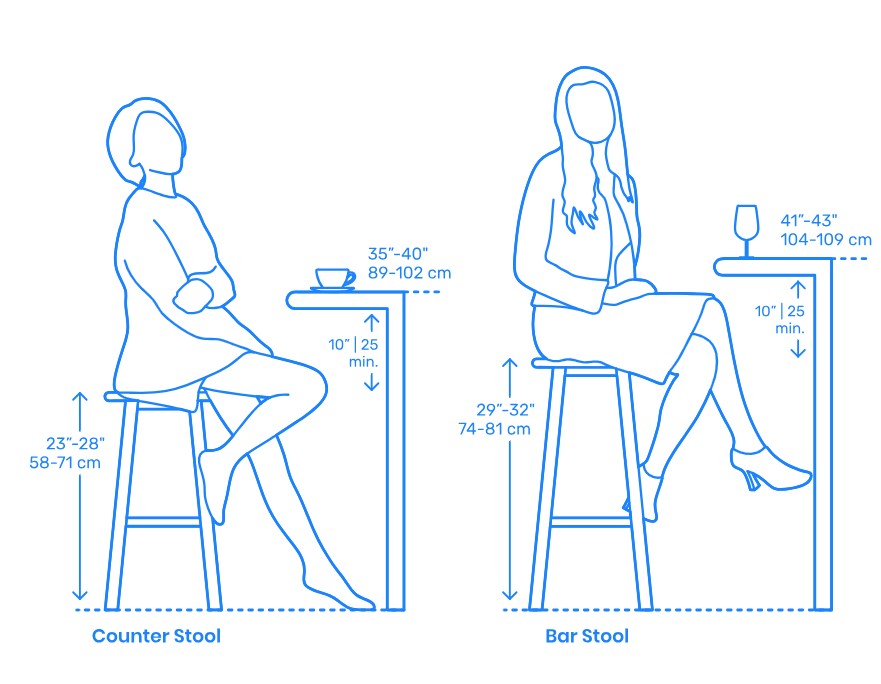
Materials & Construction Quality When Choosing a Stool
When figuring out how to choose a bar stool, particularly for your kitchen, the material and quality of construction are key factors. These elements not only dictate the stool’s durability but also influence its aesthetics and how well it complements your space. A well-constructed stool made from suitable materials can make a lasting impression while offering long-term usability. Therefore, paying close attention to these details is crucial for making an informed and satisfying choice.
- Wood:
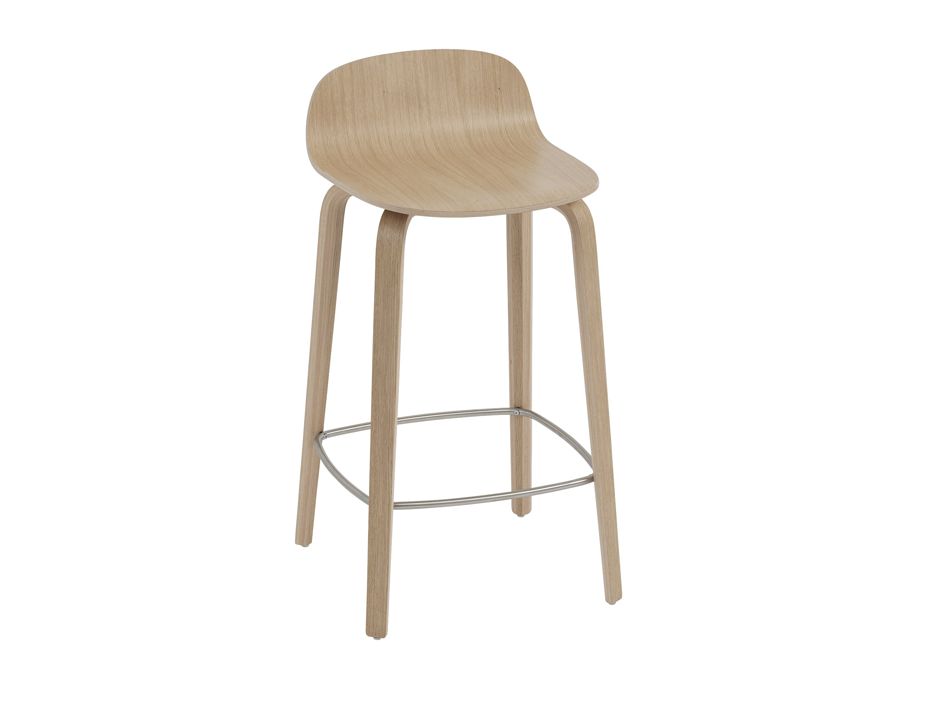
Wooden bar stools offer a classic and warm aesthetic. They come in various wood types such as oak, cherry, or walnut.
- Pros: Elegant appearance, durable, can be refinished, fits various decor styles.
- Cons: Susceptible to scratches, may require maintenance, and can be heavier.
- Metal:
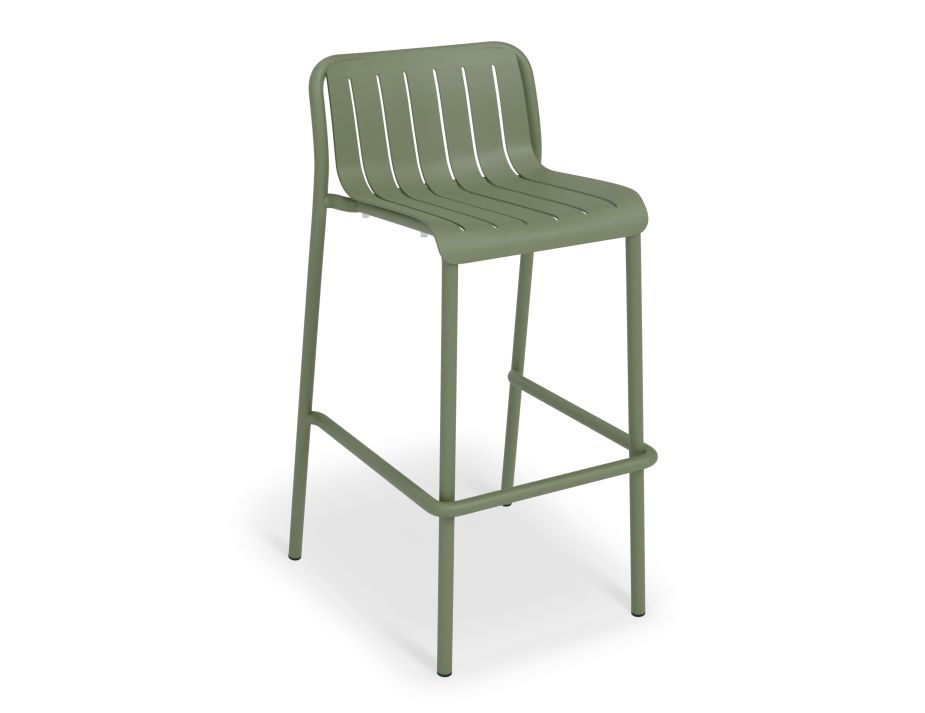
Metal bar stools, often made from steel, aluminium, or iron, provide a sleek and industrial look. They are known for their sturdiness and are easy to clean.
- Pros: Modern and minimalist look, durable, easy to clean, lightweight.
- Cons: May lack cushioning, can feel cold, not as comfortable for extended
- Upholstered:
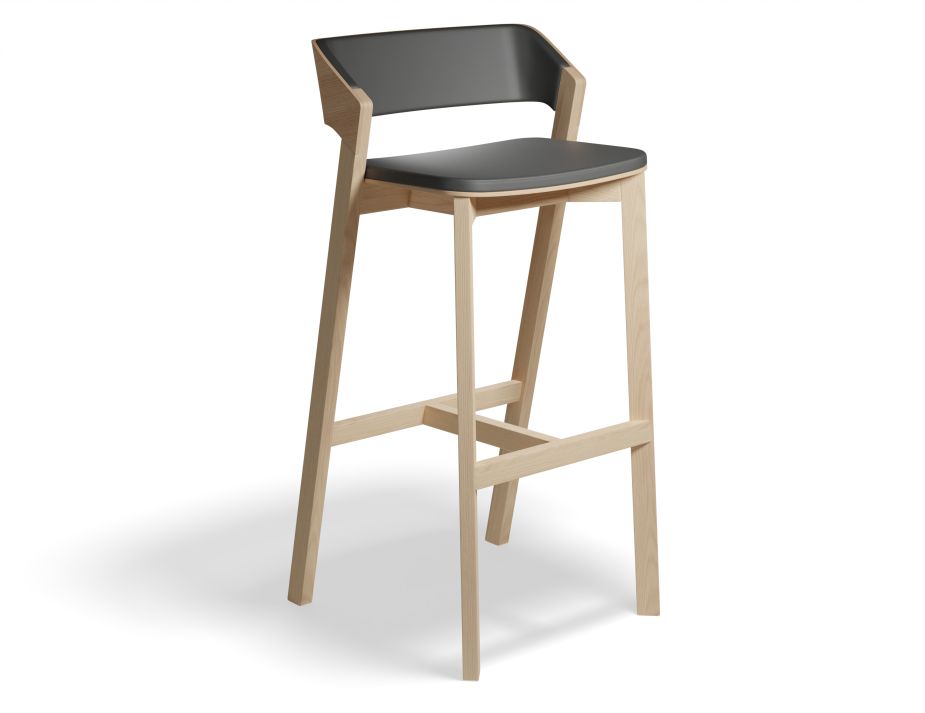
Upholstered bar stools feature cushioned seats and sometimes even backrests. These are designed for maximum comfort and come in a wide range of fabric or leather options.
- Pros: Exceptional comfort, diverse style options, soft seating experience.
- Cons: Prone to stains, may require more maintenance and can be less durable.
The Importance of Construction Quality:
- Joinery: Look for sturdy joinery methods like mortise and tenon or dovetail joints, which enhance durability.
- Stability: Check for features like crossbars or stretchers that provide stability and prevent wobbling.
- Hardware: Quality screws, bolts, and brackets should be used to ensure the bar stools remain secure over time.
- Weight Capacity: Pay attention to the weight capacity of the stools to ensure they can safely accommodate all users.
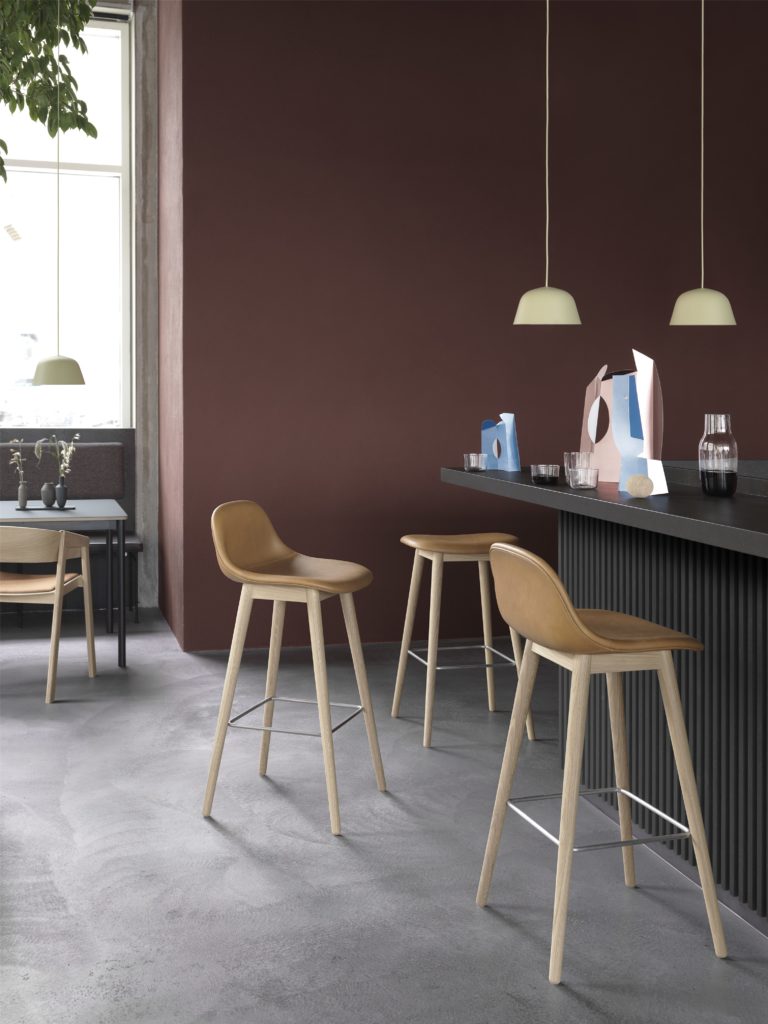
Fiber Stool with Backrest Wood Base
Backed vs. Backless Bar Stools
One of the pivotal decisions when choosing bar stools is whether to opt for backed or backless designs. Both types have their own set of advantages and considerations. Choosing between backed and backless bar stools depends on your specific needs and style preferences. If comfort is a top priority and you plan to use the bar stools for more extended periods, backed bar stools with lumbar support might be the better choice. If you have limited space, a preference for a minimalist appearance, or a desire for a clean, unobstructed view in open-concept spaces, backless bar stools may be the way to go.
The difference between Backed and Backless Bar Stools:
Backed Bar Stools:
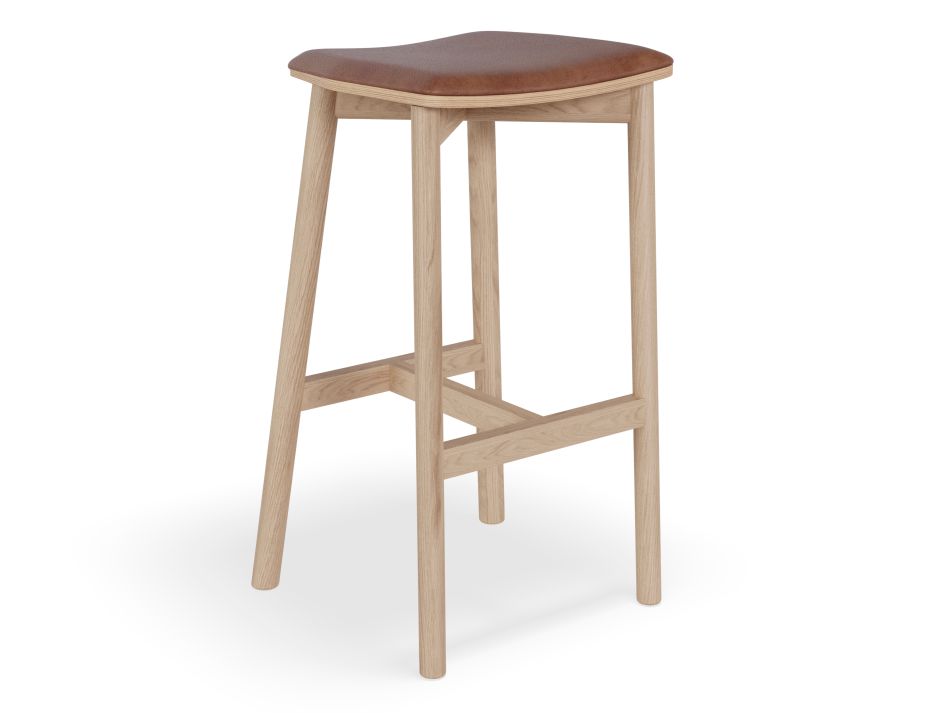
- Pros: Backed bar stools offer excellent lumbar support, making them more comfortable for extended seating. They are especially suitable for those who prefer a traditional or formal look. Backs can also provide an additional design element, with various shapes and styles available.
- Cons: Backed bar stools tend to be bulkier and may not slide neatly under the counter or bar when not in use. They can obstruct the view in open-concept spaces and may limit the number of stools you can fit in a tight area.
Backless Bar Stools:
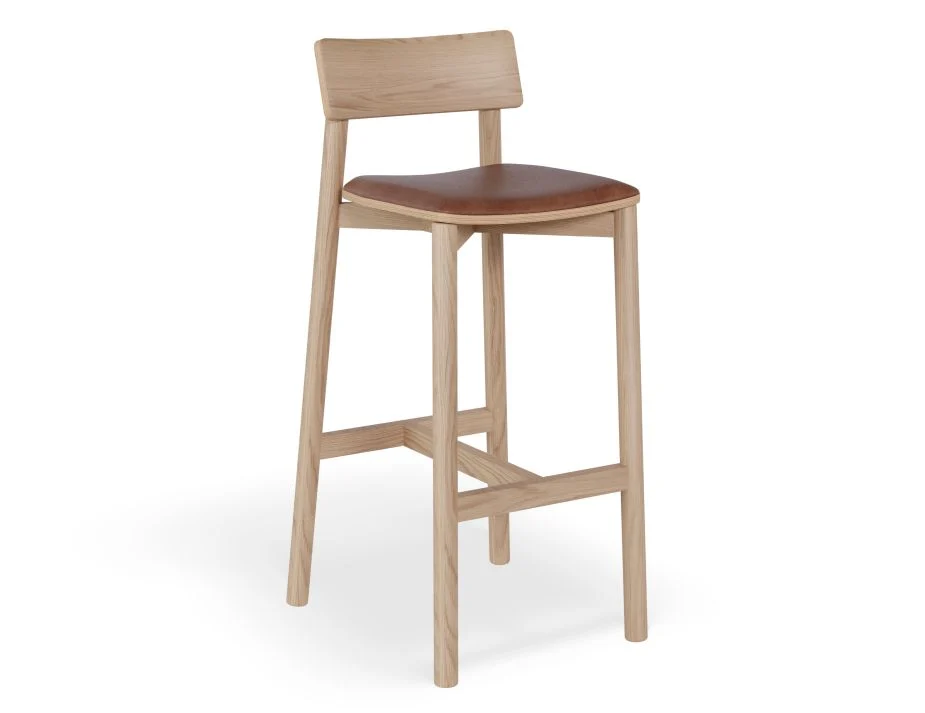
- Pros: Backless bar stools have a sleek and minimalist appearance. They are lightweight, easy to move, and can be conveniently tucked under the counter or bar. This makes them a space-saving option, ideal for smaller kitchens or bars.
- Cons: They may lack the comfort of backrests, making them less suitable for extended seating. Users might not feel as supported, particularly if they intend to sit for extended periods.
Swivel vs. Stationary Bar Stools
When exploring how to choose a bar stool, one important aspect to consider is the choice between swivel and stationary designs. Both styles come with their own unique features and advantages tailored to specific needs and preferences. Whether you’re looking for easy mobility or a fixed position, understanding the differences between these types can be crucial in making an informed decision. So, as you navigate through your options, keep in mind what each design offers to find the perfect fit for your space.
The Difference Between Swivel and Stationary Bar Stools:
Swivel Bar Stools:
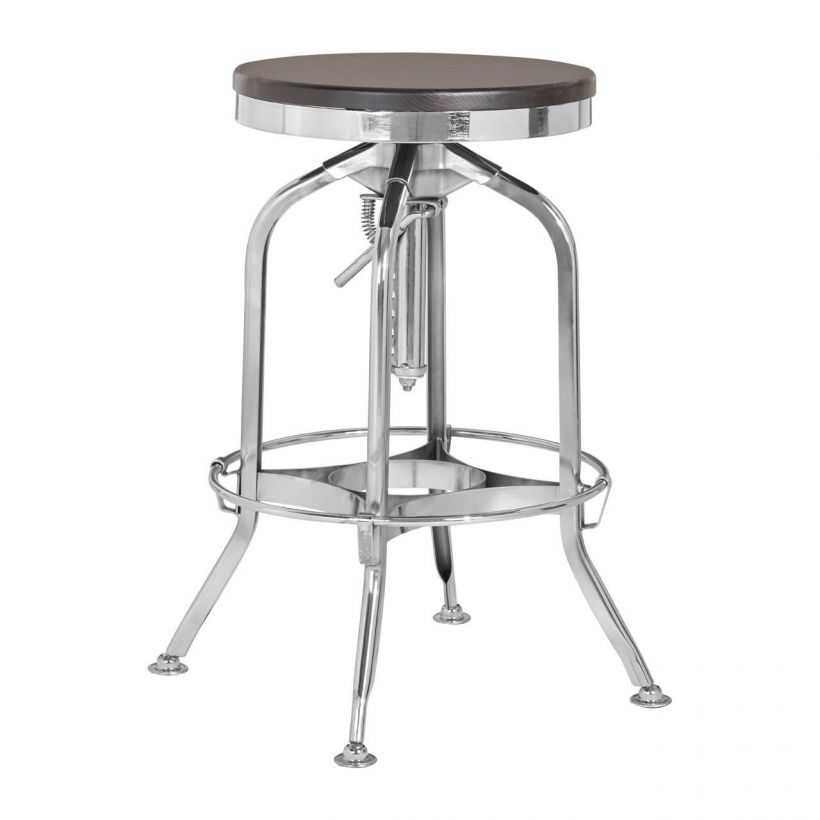
- Pros: Swivel bar stools have a seat that can rotate 360 degrees, allowing users to turn in any direction without getting off the stool. This feature enhances mobility and ease of use. They are especially popular in spaces where people want to engage in conversations without constantly repositioning their stools.
- Cons: Swivel stools tend to be more complex in their construction, which can make them slightly more expensive. They may also require more maintenance due to moving parts.
Stationary Bar Stools:
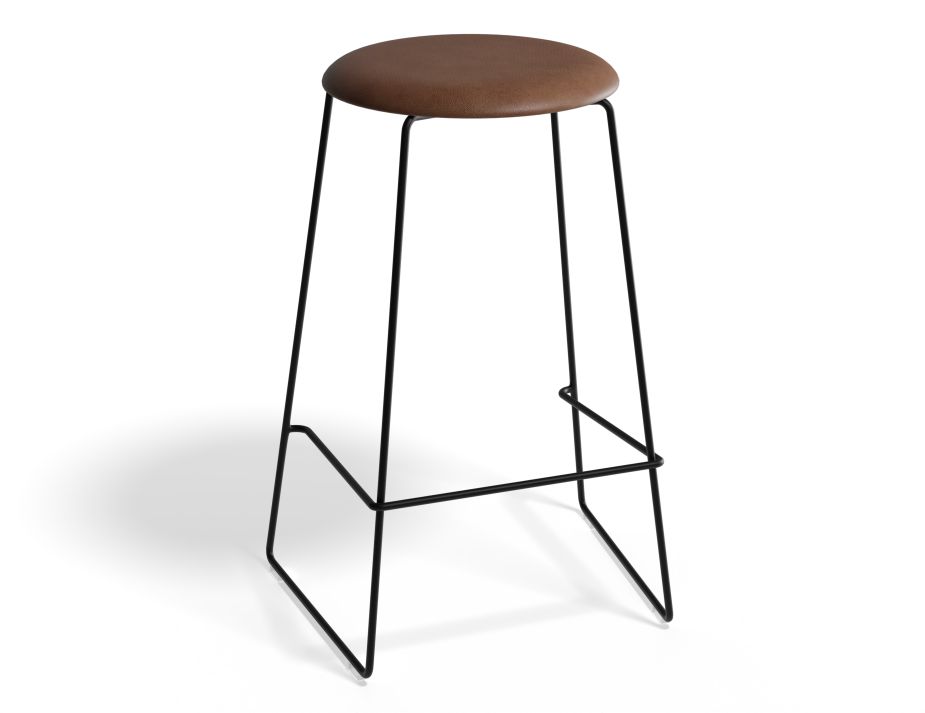
- Pros: Stationary bar stools have a fixed seat, meaning they do not rotate. They are typically simpler in design and construction, making them more affordable and durable over time. Stationary stools are often favoured for their stability.
- Cons: The lack of swivel functionality can limit the ease of movement and conversation in some situations. Users may need to physically turn their entire body to face different directions.
Upholstery Choices when choosing a Bar Stool
The upholstery and cushioning are vital elements to consider when figuring out how to choose a bar stool. These factors don’t just influence aesthetics but also have a significant impact on comfort. The choice of material, whether leather, fabric, or synthetic, combined with the quality of padding, can drastically elevate or diminish your overall seating experience. Therefore, paying close attention to these details is essential for achieving a harmonious blend of style and comfort in your bar stool selection.
Different Upholstery Options:
Leather:
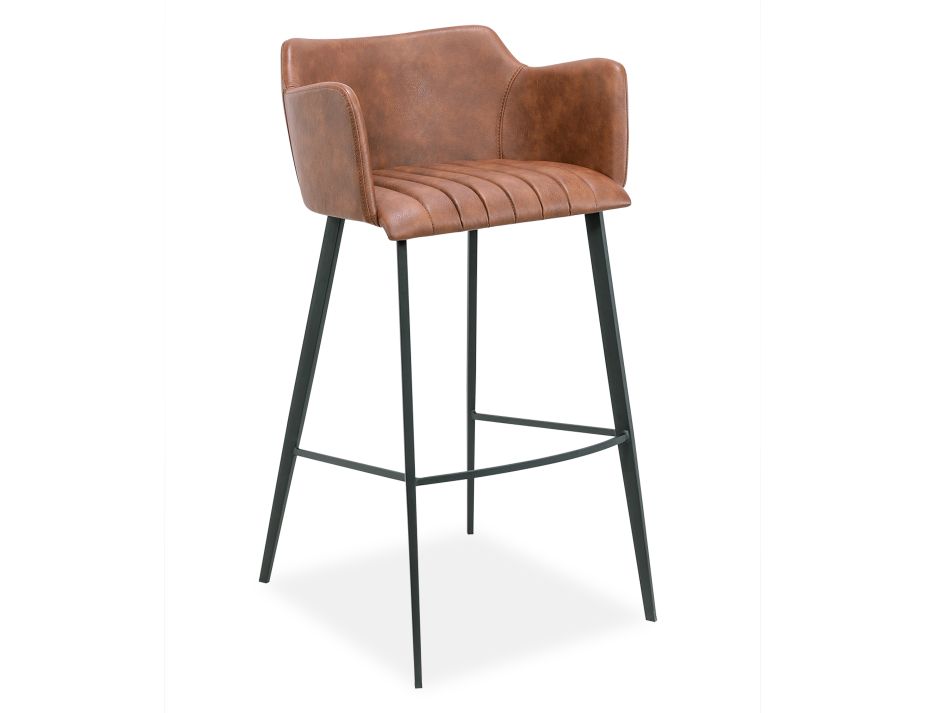
- Pros: Leather upholstery exudes luxury and durability. It’s easy to clean, ages gracefully and adds a touch of sophistication to your space. Genuine leather develops a beautiful patina over time.
- Cons: Genuine leather can be expensive. It may also require regular maintenance to keep it looking its best. Additionally, it may not be the best choice for households with pets, as it can be prone to scratches.
Fabric:
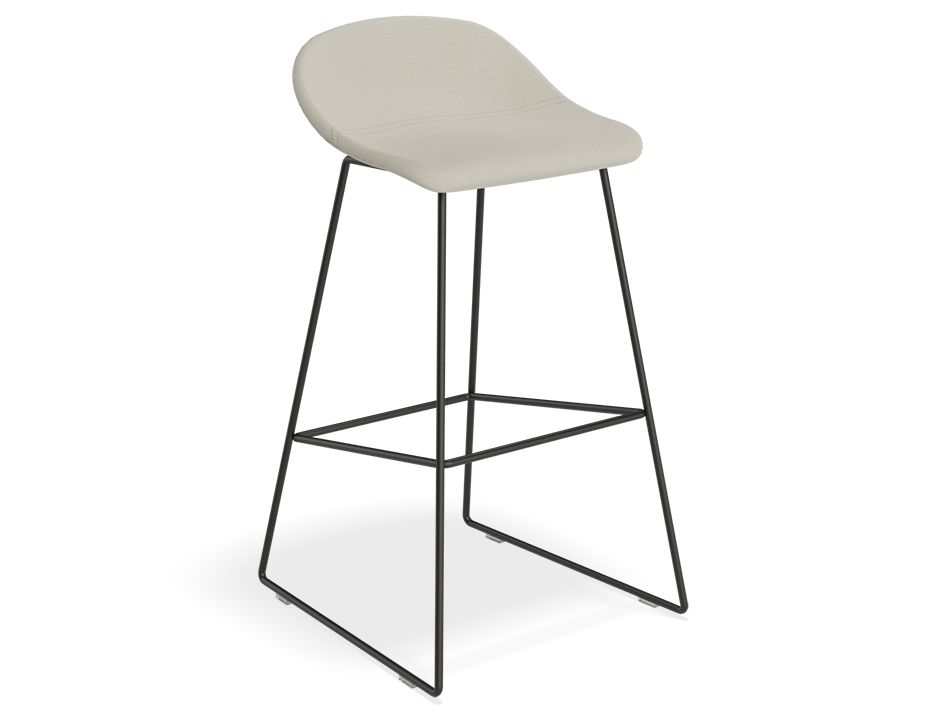
- Pros: Fabric upholstery offers a wide range of colours and patterns, making it easy to match your decor. It can be comfortable, breathable, and soft to the touch. It’s often more affordable than leather.
- Cons: Fabric may stain more easily than other materials, so it’s essential to choose a fabric with stain-resistant properties if you have children or pets. Regular cleaning may be necessary to keep it looking fresh.
Vinyl:
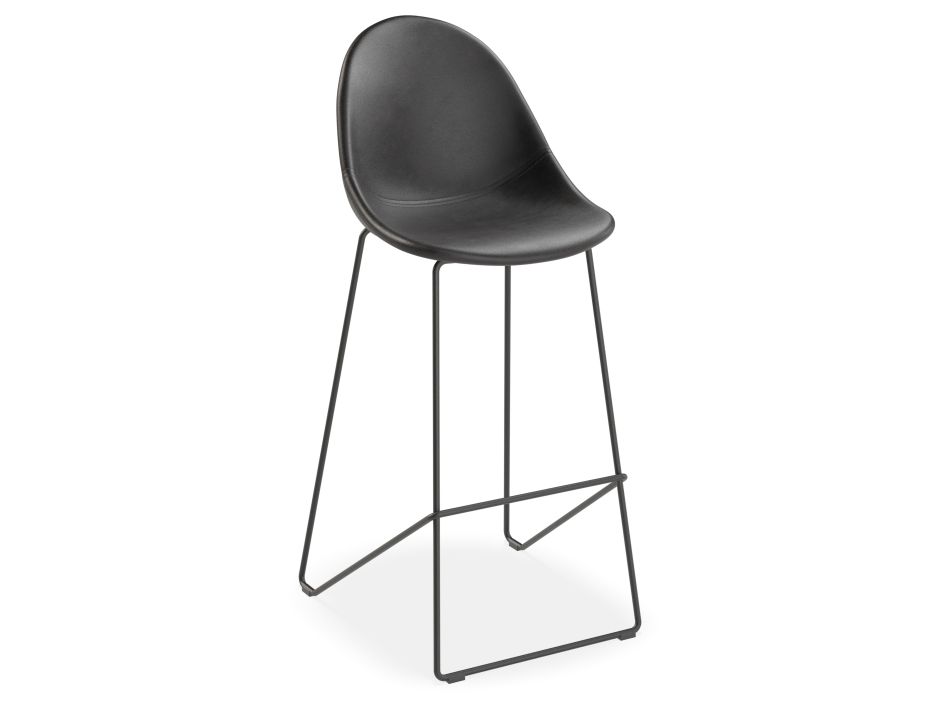
- Pros: Fabric upholstery offers a wide range of colours and patterns, making it easy to match your decor. It can be comfortable, breathable, and soft to the touch. It’s often more affordable than leather.
- Cons: Fabric may stain more easily than other materials, so it’s essential to choose a fabric with stain-resistant properties if you have children or pets. Regular cleaning may be necessary to keep it looking fresh.
Tips on Choosing the Right Upholstery for Your Lifestyle:
By carefully assessing your preferences, lifestyle, and budget, you can Choose a Bar Stool upholstery that not only enhances the visual appeal of your space but also provides the level of comfort and maintenance you desire.
- Consider Maintenance: Think about your ability and willingness to maintain the upholstery. Leather may require periodic conditioning, while fabric and vinyl may need regular cleaning. Choose an option that aligns with your lifestyle.
- Pets and Children: If you have pets or young children, consider materials that are easy to clean and resistant to stains. Vinyl or certain types of fabric with stain-resistant treatments can be a practical choice.
- Aesthetics: Select upholstery that complements your decor and personal style. Take into account the colour, texture, and pattern to ensure it blends seamlessly with your surroundings.
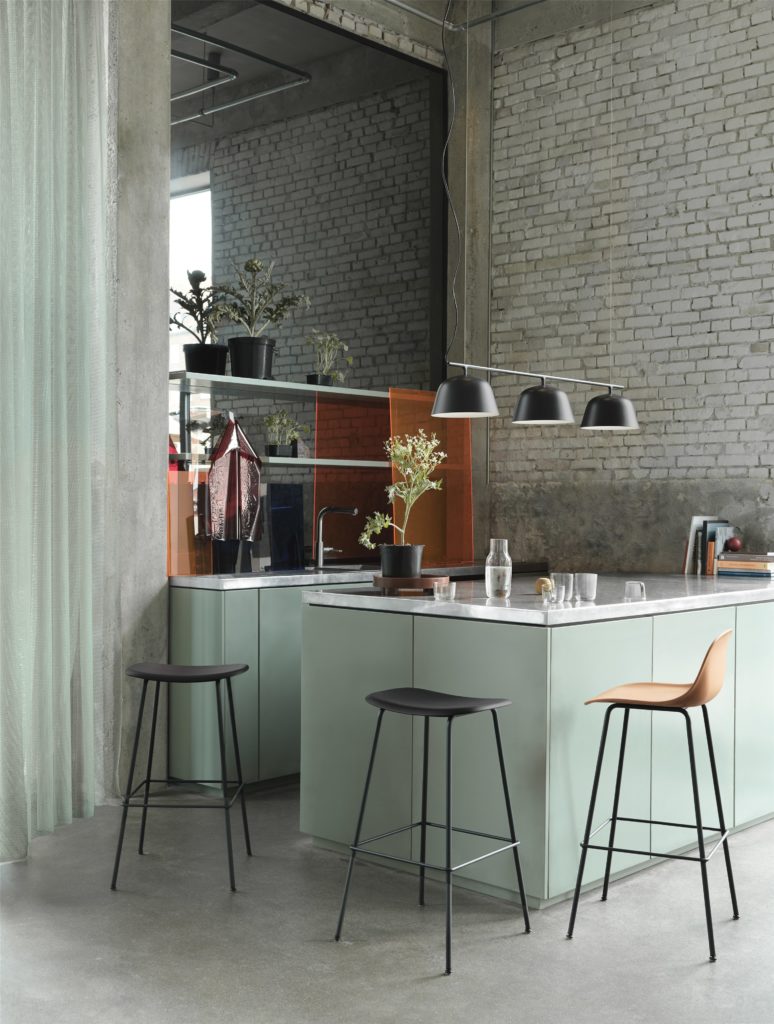
Fiber Stool with Tube Base by Iskos Berlin Muuto
Types of Bar Stools to consider
The style and aesthetics of your bar stools are crucial in defining the overall ambience and visual appeal of your space. Different bar stool styles can evoke various moods and complement diverse interior designs.
Modern Bar Stools:
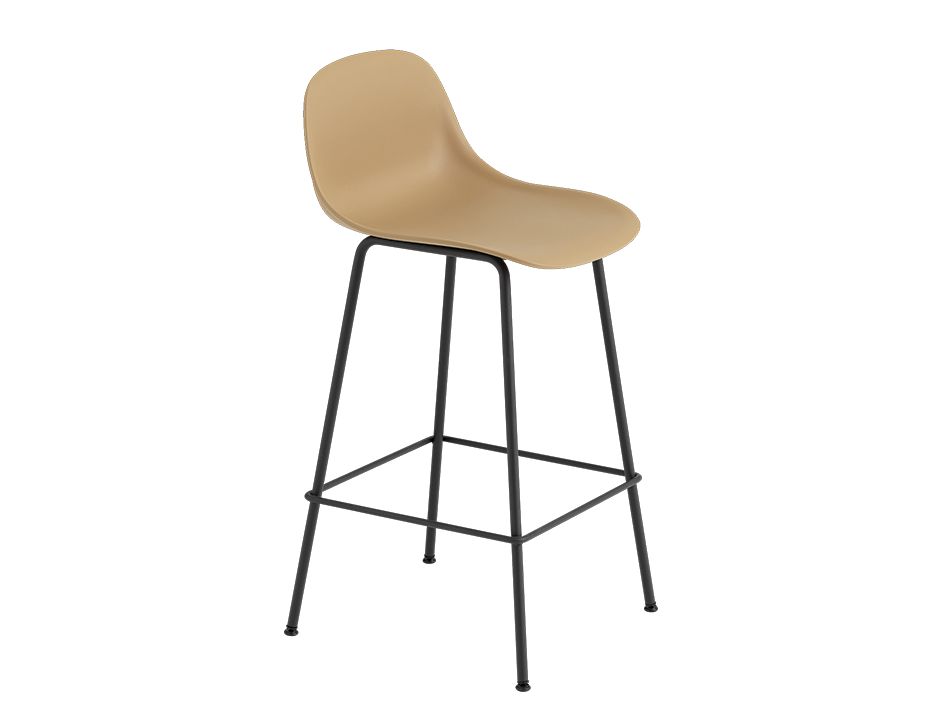
Modern bar stools feature sleek lines, and minimalist designs, and often use materials like metal, plastic, or acrylic. They emphasize clean and uncluttered aesthetics.
Rustic Bar Stools:
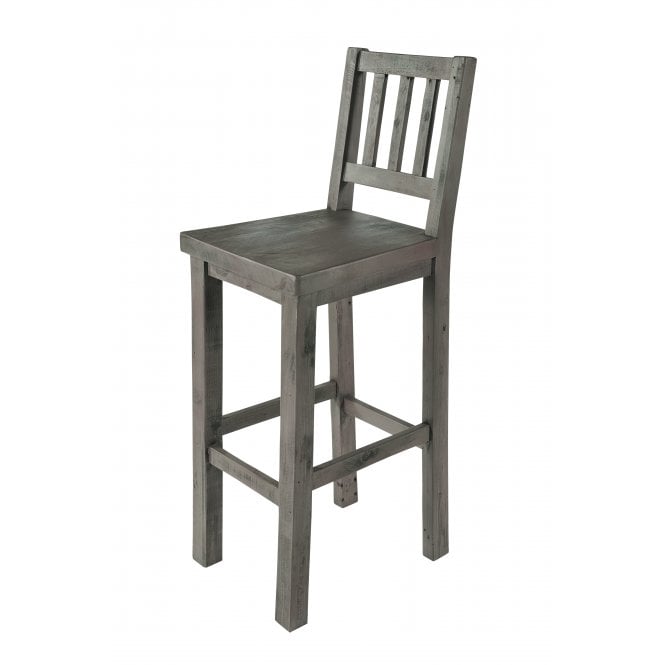
Rooted deeply in a pastoral and traditional aesthetic, these stools often boast materials that carry the whispers of time. Typically crafted from wood, they might feature various grains, knots, and textures, each telling a unique story. These stools often showcase distressed finishes, which not only add character but also hint at history, making each piece distinct.
Industrial Bar Stools:
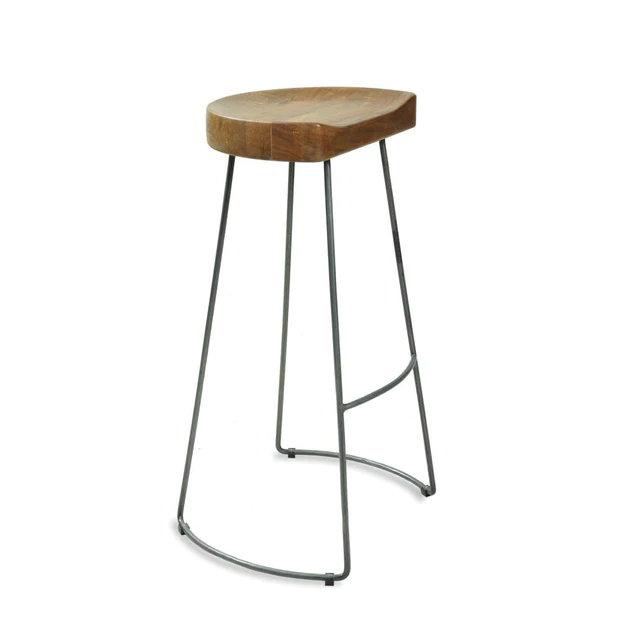
Industrial-style bar stools are a testament to the aesthetics of functionality and raw beauty. They often incorporate raw materials such as rugged metal, distressed wood, and sometimes even reclaimed machinery parts. These stools boast a robust and sturdy construction, often emphasizing features like exposed hardware, rivets, and weld marks.
Contemporary Bar Stools:
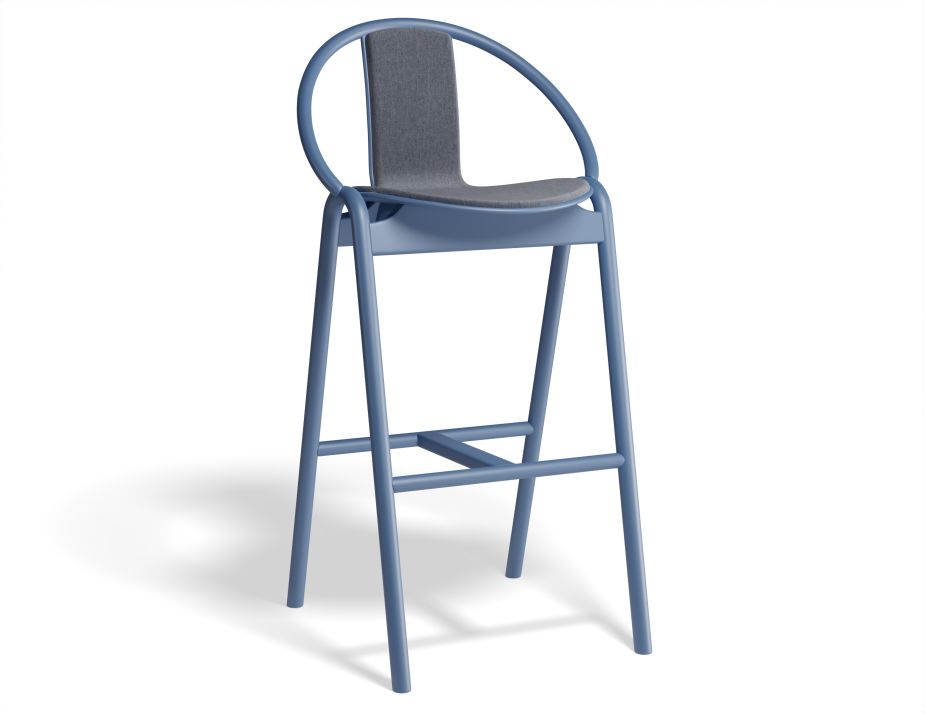
Contemporary bar stools encompass a wide range of styles that are currently trending. They may incorporate bold colours, unique shapes, and innovative materials.
Traditional Bar Stools:
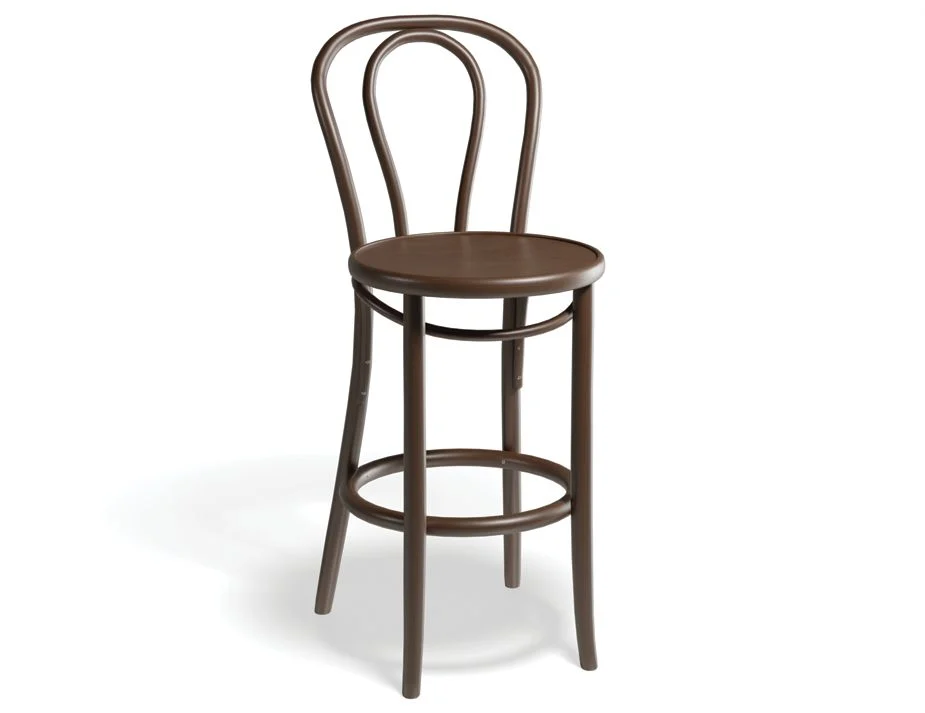
Traditional bar stools have a classic and timeless look. They often feature ornate details, rich wood finishes, and upholstered seats with elegant patterns.
Maintenance and Cleaning Tips for Different Materials:
Wooden Bar Stools:
- Regular Dusting: Dust wooden bar stools regularly with a soft, lint-free cloth to prevent the buildup of dirt and debris.
- Cleaning Solutions: For spills or stains, use a mild wood cleaner and a damp cloth. Avoid harsh chemicals that can damage the finish.
- Polishing: Periodically apply wood polish to maintain the lustre of the wood.
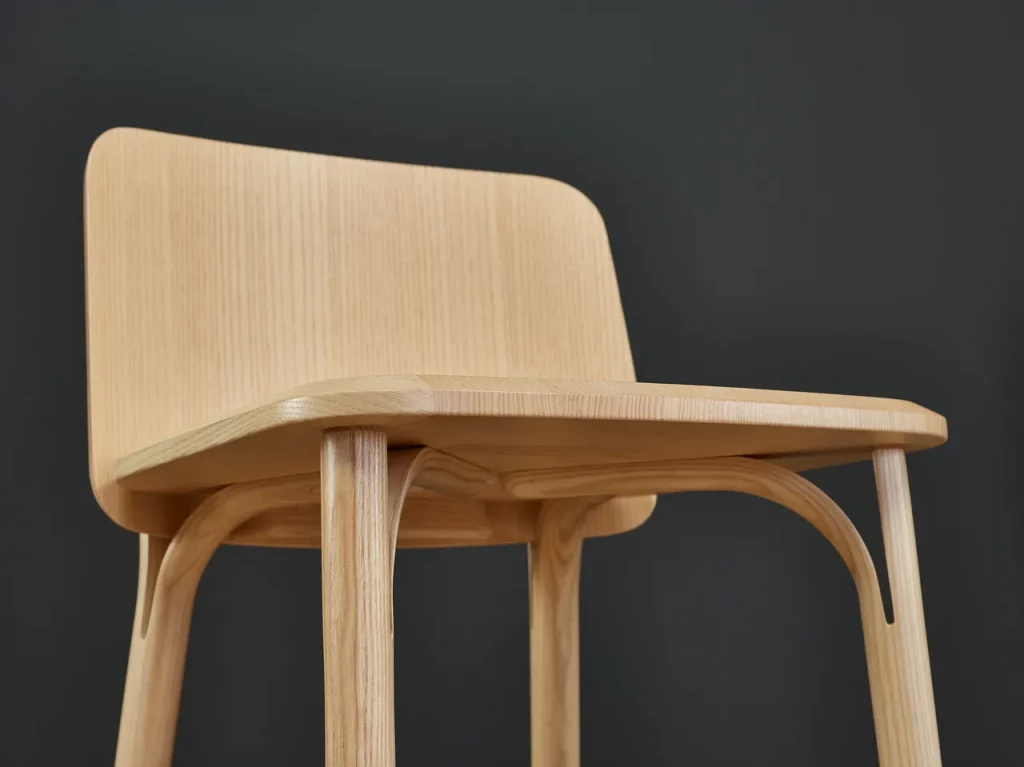
Metal Bar Stools:
- Dusting and Wiping: Dust metal bar stools regularly and wipe them down with a damp cloth. Dry them thoroughly to prevent water spots.
- Stain Removal: For stubborn stains or rust, use a mixture of baking soda and water to gently scrub the affected areas. Rinse and dry promptly.
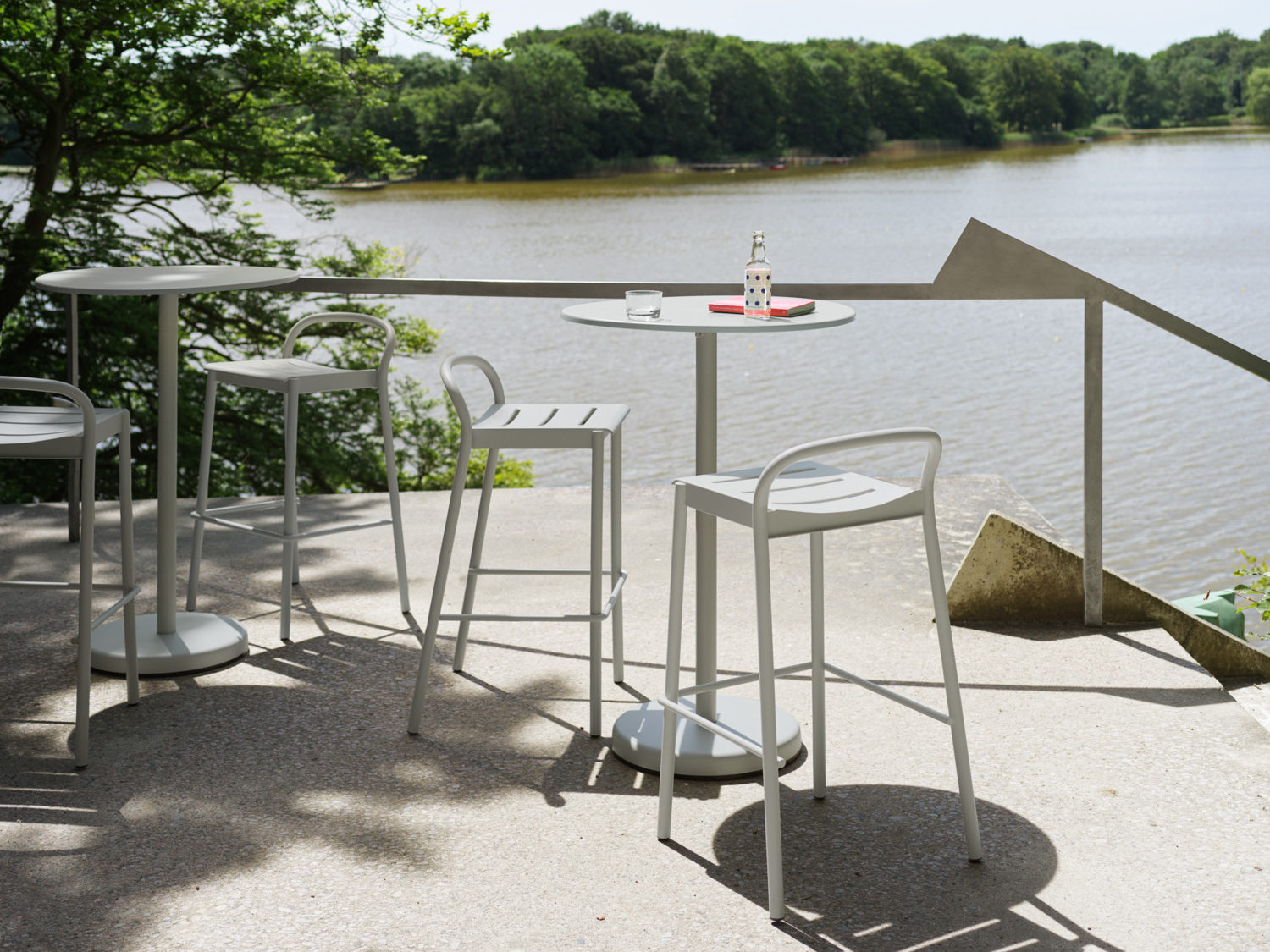
Upholstered Bar Stools:
- Regular Vacuuming: Vacuum upholstered seats and backs regularly to remove dust and debris. Use a brush attachment to avoid damaging the fabric.
- Spot Cleaning: For spills or stains, blot the area immediately with a clean, dry cloth. Avoid rubbing, as it can push the stain deeper into the fabric.
- Wipe and Clean: Wipe vinyl or leather upholstery with a damp cloth to remove surface dirt and spills promptly.
- Stain Protection: Apply a fabric protector spray to prevent stains from setting in. Reapply as needed.
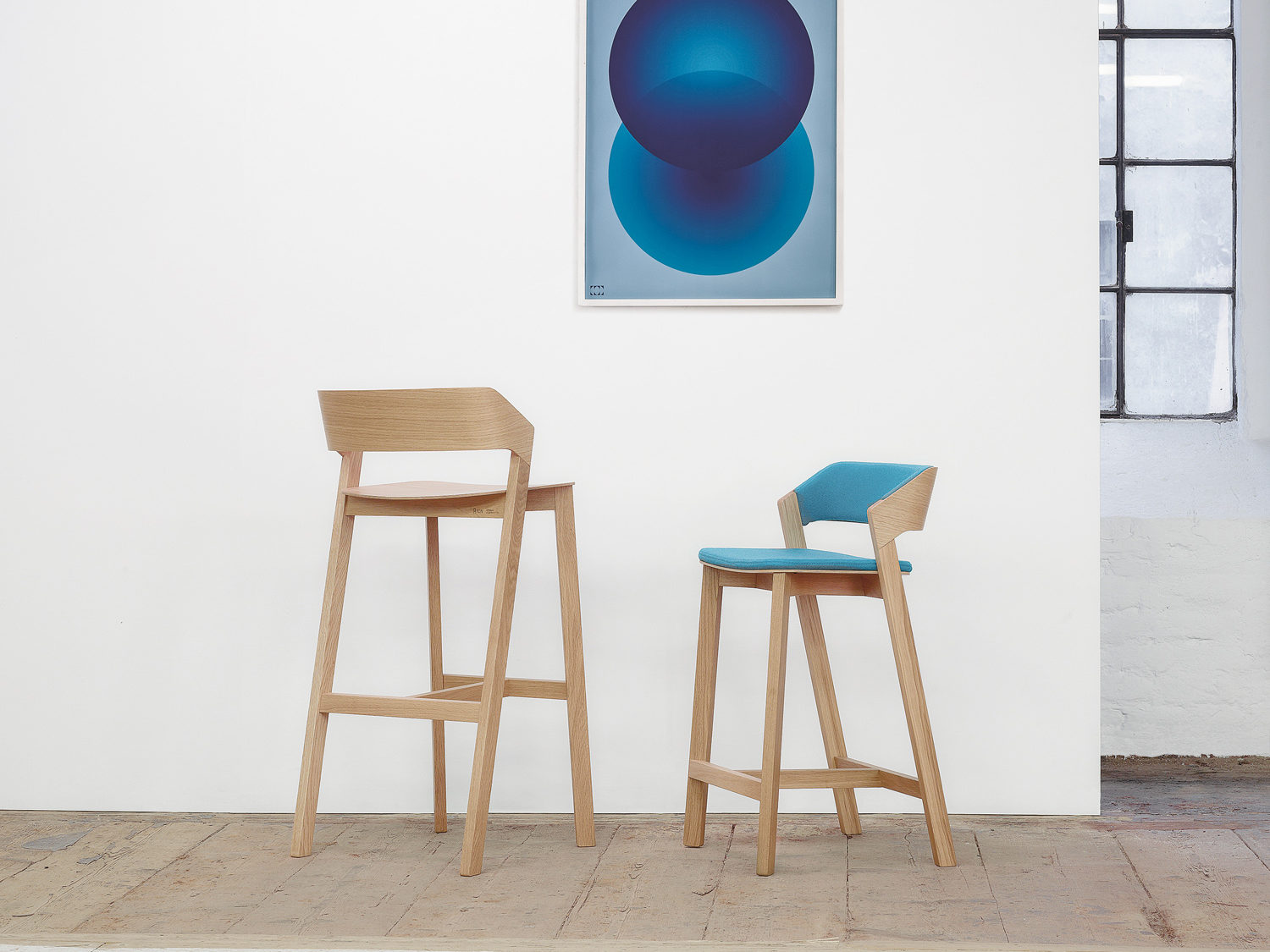
The Art and Science of Selecting the Ideal Bar Stool
In conclusion, understanding how to choose a bar stool involves a series of thoughtful considerations—from the height and material to the design and functionality. This isn’t a decision to be made lightly, as the right bar stool can significantly enhance both the aesthetic and practical aspects of your living space. Whether it’s for your kitchen, dining area, or home bar, taking the time to carefully consider your options can make all the difference in comfort, style, and usability. We hope this comprehensive guide has equipped you with the insights you need to make an informed and satisfying choice. Happy stool shopping!
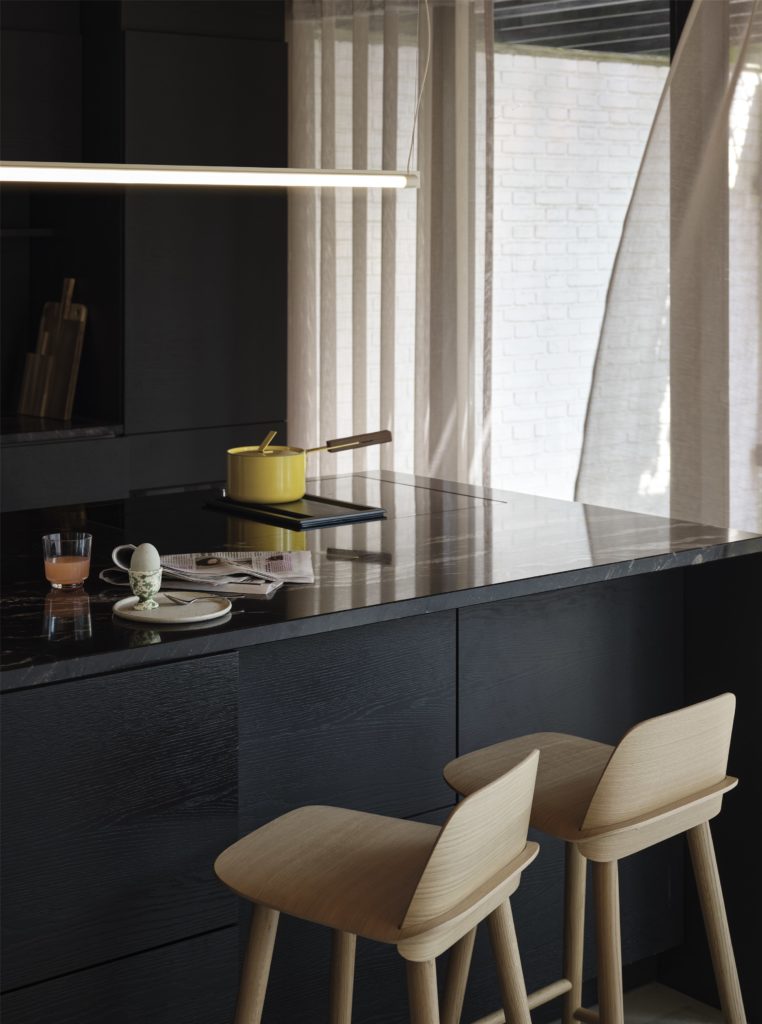
Frequently Asked Questions
Metal stools are inherently more rigid than upholstered or wooden ones. However, their comfort can be significantly enhanced with padded seats, cushions, or ergonomic design features. The coolness of metal might be less inviting initially, but it’s durable and easy to maintain, making it popular in high-traffic areas.
Stools with backs generally offer superior comfort and support, especially if one intends to sit for extended durations. They provide lumbar support and a sense of security, making them preferable for families with children or for those who prioritize comfort. They can, however, take up more space and might not easily tuck under counters.
Consider the stool’s height in relation to your counter, ensuring around 25-30cm of space between the stool seat and the counter’s underside. Also, account for width and spacing between multiple stools.
For kitchen islands, prioritize functionality and style. Ensure the stools are the right height, easy to maneuver, and complement the island’s design and the broader kitchen aesthetic.
The ideal stool height depends on your counter’s height. For counters approximately 90cm high, a 65cm stool is suitable. For taller counters, around 100-110cm, a 75cm stool might be a better fit.
